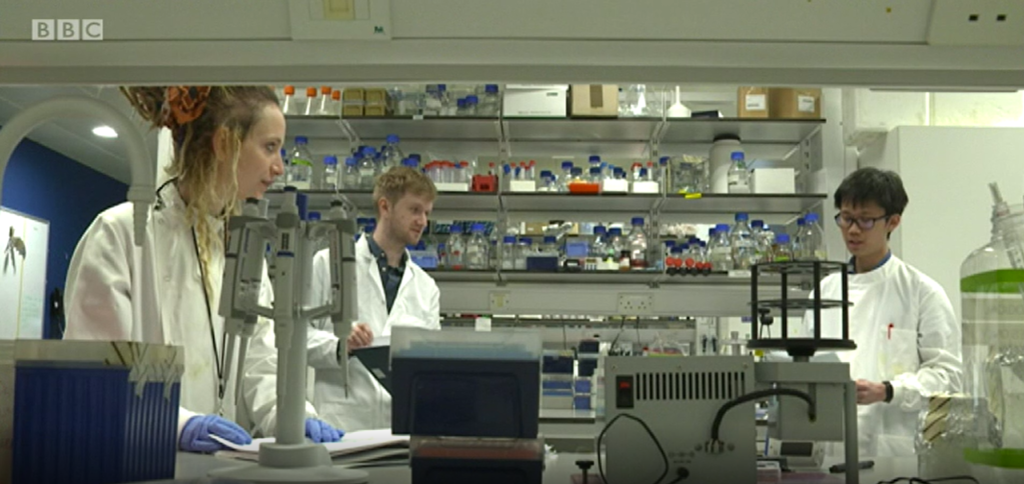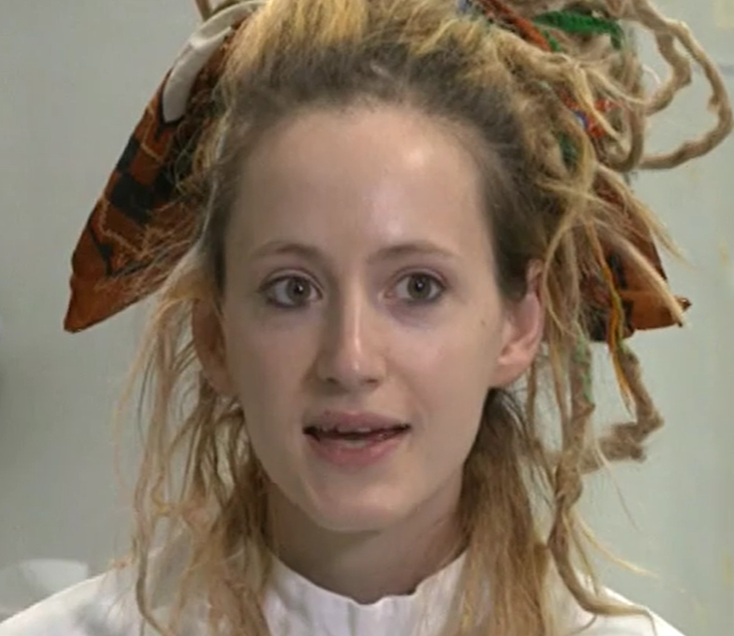
Dorothy Hawkins is a third year DTP student. She featured on the BBC Look North (Yorkshire) news on 20th April 2020. In the midst of the COVID-19 pandemic, Dorothy and her colleagues at The University of York have stepped up to the challenge. They are working at top speed to try and better understand the new coronavirus.
Researchers at Leeds and York Universities have given over their time and resources to work solely on COVID-19. They hope the work they’re doing will help in the search for a vaccine and an anti-bodies test. Dorothy is working in the lab with her colleagues, Dr. Oliver Bayfield (PostDoc ) and De Sheng Ker (2nd year PhD), with her supervisor, Prof Fred Antson, who is supporting and overseeing the project.
Dorothy explains the work of the COVID-19 team:

“We’re trying to produce a particular part of COVID-19 and this is the part that protects the virus genome. So, the genome is similar to our genomes, in that it contains all the information that the virus needs to reproduce. What we’re trying to do it get a 3-D image of this special part that protects the genome. Ideally, when we really understand how that looks and how it works, this can be very informative for drug discovery.”
The protein they’re producing goes to groups around the country doing anti-body testing, which could tell if someone has had the virus. Longer-term, their goal is to give scientists a really good look at that protein. To do that, they need a very powerful microscope. And that’s where their colleagues at The University of Leeds come in.

Dr Rebecca Thompson, Senior Cryo-EM Support Scientist/Electron microscopy Facility Manager at The University of Leeds showed the machine to the BBC reporter and explained that:
“This microscope looks at samples under liquid nitrogen temperatures.”
These huge cryo-electron microscopes at The University of Leeds are the only ones of their kind in the north of England. First, samples of the protein are frozen down to minus 180 degrees before they go in. The machine then takes thousands of images so they can see the protein in fine detail.
Dr Thompson shares the overall aim of this research:
“If we can work out what these proteins look like at a close to atomic level, that can provide information that might help us in the development of tests and also potentially therapeutics in the future.”

All the raw data gathered will be made available publicly, on-line to help scientists across the world. The team says having a common purpose has created a spirit of co-operation like they’ve never seen before. Dorothy describes the collaborative spirit:
“Everyone’s been so keen for collaboration and all competition has been dropped. As soon as anyone has any findings, they’ve been put out there straight away, before publication.”
There’s still so much to understand about the new coronavirus and what this team in Yorkshire is doing would normally take months or years but they’re working as fast as they can; keen to play their part in a global effort.
And finally, in the words of the York research team:

Credits: BBC Look North (Yorkshire) 20/04/2020.
or more details about the science involved in this COVID-19 research, see the article on The University of York’s website: click here.
